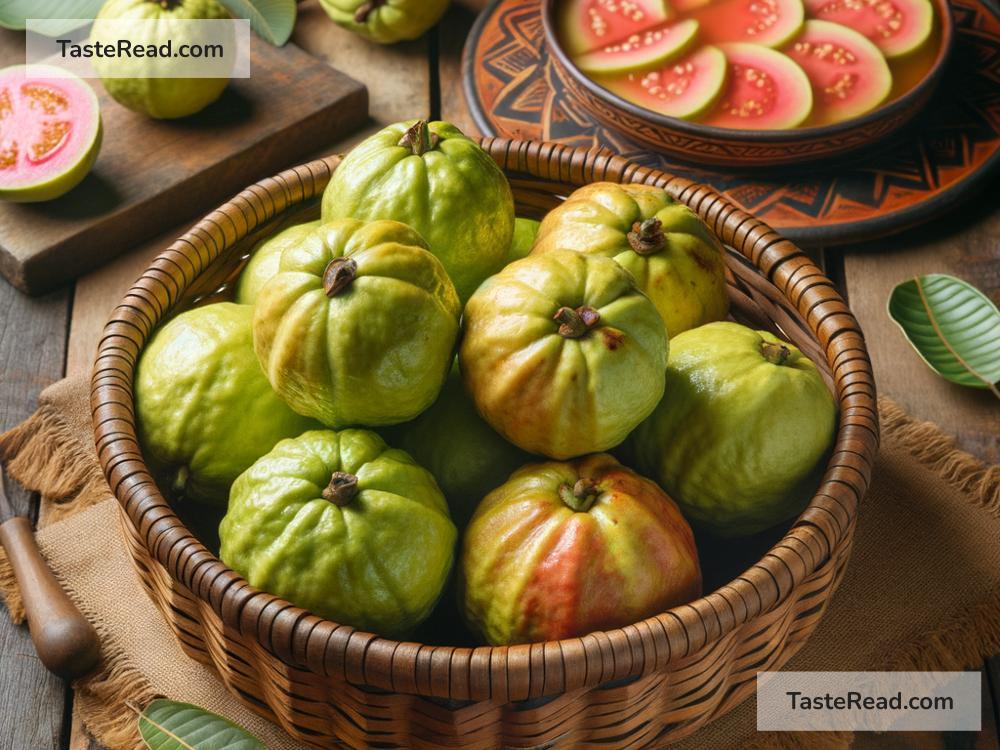The Curious Story of Guava in South American Diets
South America is famous for its vibrant culture, colorful festivals, and flavorful foods. It’s a region where every bite tells a story of history, nature, and creativity. Among the many fruits that thrive in its warm, tropical climate, guava stands out as one of the most loved and versatile. Its journey from the wild to the plates of millions is a curious and fascinating story about tradition, taste, and survival.
What is Guava?
Guava is a small, round fruit with a green or yellow skin and soft, sweet flesh. Inside, you’ll find tiny edible seeds, which are part of what makes the fruit unique. Guava can be eaten fresh or turned into juices, jams, and desserts. Its taste is tangy and sweet, like a mix of pear and strawberry, but really, guava is one of a kind.
This fruit comes from the tropical regions of the Americas, and its scientific name is Psidium guajava. It grows well in warm climates, making South America and Central America its natural home.
A Native Treasure
Guava has been grown in South America for thousands of years. Before Spanish colonizers arrived in the Americas, indigenous peoples had already discovered this fruit’s nutritional value. For them, guava wasn’t just a tasty treat—it was medicine. Packed with vitamin C, it helped people stay healthy long before modern supplements were invented.
Indigenous communities used guava not only as food but also to treat health problems. For example, its leaves could be brewed into tea to calm stomach aches or used as a natural skin remedy. The fruit itself was often shared during gatherings, spreading joy and nourishment among families and friends.
The Arrival of Colonizers
When Spanish and Portuguese explorers arrived in South America in the late 1400s and early 1500s, guava caught their attention. They found it growing wild in the forests and learned about its uses from local communities. The colonizers took guava seeds with them to other parts of the world, introducing the fruit to places like Asia and Africa. Today, guava is grown in tropical countries far beyond South America, showing how food can unite cultures across continents.
However, in South America, guava never lost its importance. Unlike some traditions that faded under colonization, guava remained deeply rooted in local diets and culture. It adapted to modern times, becoming a staple ingredient in innovative recipes like guava paste and guava juices.
Guava in Everyday Life
What makes guava special for South Americans is how it fits into daily routines. In many countries like Brazil, Colombia, Peru, and Venezuela, guava isn’t just a snack—it’s part of breakfast, lunch, and even dinner. Guava juice is popular for its refreshing taste and is often served at family meals. In homes and street markets, people make “dulce de guayaba,” or guava paste, which can be spread on bread or paired with cheese.
This pairing, known as “guava and cheese,” is especially popular in Colombia and Venezuela. Some call it the “Romeo and Juliet” of food because the sweet fruit and creamy cheese seem like a match made in heaven. It’s a simple but unforgettable combination that connects people of all ages.
In Brazil, guava takes on a magical twist in a dessert called “goiabada.” This sweet, thick paste is often served with crackers or cheese as a treat during holiday celebrations. The way Brazilians transform the fruit into something special shows their creativity and love of sugary delights.
Meanwhile, in Peru, guava has become part of modern cuisine as chefs experiment with its flavor. Guava sauces are used to dress up meats, while guava sorbet can cool you down on a hot day. Even Peruvian smoothies feature guava alongside other tropical fruits like mango and passion fruit.
Guava’s Health Benefits
In addition to its delicious taste, guava is packed with health benefits. It’s rich in vitamin C—more than an orange—and helps boost your immune system. Guava also contains fiber, which supports digestion and keeps your stomach happy. Its antioxidants reduce inflammation and promote healthy skin.
South Americans value guava not only because it tastes good but because it’s good for you. As natural remedies remain part of cultural traditions, guava continues to play its role as both food and medicine.
Guava’s Role in Modern Times
Though guava has been enjoyed for centuries, it’s not just a fruit of the past. Today, guava reflects the creativity of South American cuisine. Chefs are using guava in everything from cocktails to gourmet dishes, making it a trendy ingredient in modern kitchens. Its appeal goes beyond borders, with restaurants around the globe offering guava-inspired dishes.
And thanks to advances in agriculture, guava is now more widely available than ever. Exporting guava to other countries has helped share South America’s culture and flavor with the rest of the world.
A Fruit That Tells a Story
The story of guava is more than just the tale of a fruit. It’s about how something simple can bring people together, preserve traditions, and adapt to changing times. For South Americans, guava represents resilience, creativity, and the joy of sharing food with loved ones.
From ancient medicine to modern cuisine, guava is a fruit that tells the story of South America’s soul. It’s curious how one small fruit can hold so much history and flavor, but that’s what makes guava truly special. So the next time you eat guava or sip guava juice, remember the rich history and the many hands that made it possible for this delicious fruit to be enjoyed all around the world.


